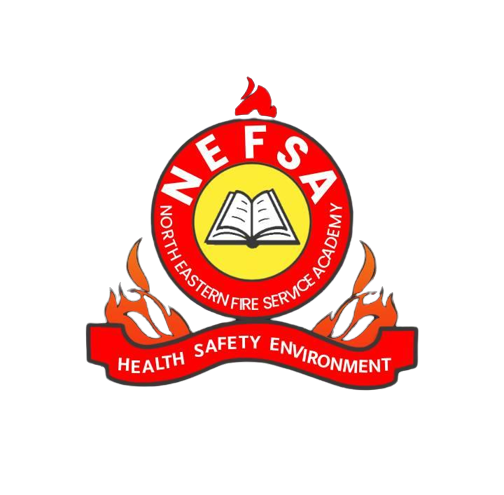Fire emergencies can happen anywhere — at home, in offices, or in schools — and knowing how to use a fire extinguisher properly can save lives. At NEFSA (Northeast Fire & Safety Academy), we train individuals and organizations to handle fire emergencies with confidence. This step-by-step guide will help you understand the right way to operate a fire extinguisher, when to use it, and safety tips to follow.
1. Understand the Types of Fire Extinguishers
Before using one, it’s important to know that extinguishers are designed for specific fire types:
-
Class A: For paper, cloth, wood, trash (ordinary combustibles).
-
Class B: For flammable liquids like petrol, oil, and paint.
-
Class C: For electrical fires.
-
Class D: For combustible metals.
-
Class K (F in India): For kitchen fires involving oils and fats.
NEFSA Tip: Always check the label of the extinguisher before use. Using the wrong extinguisher can make the fire worse.
2. Remember the PASS Technique
The universal method to operate a fire extinguisher is called PASS:
-
P – Pull the pin to unlock the extinguisher.
-
A – Aim low, pointing the nozzle at the base of the fire.
-
S – Squeeze the handle slowly and evenly.
-
S – Sweep the nozzle from side to side until the fire is completely out.
This technique ensures the fire is attacked at its source rather than just the flames.
3. Step-by-Step Guide to Using a Fire Extinguisher
Here’s how to act during a fire emergency:
-
Stay Calm: Panic can reduce your reaction time.
-
Alert Others: Raise an alarm and ensure people evacuate.
-
Check the Extinguisher: Confirm the pressure gauge is in the green zone.
-
Position Yourself Safely: Stand about 6-8 feet away from the fire.
-
Apply PASS Method: Use the Pull–Aim–Squeeze–Sweep technique.
-
Watch for Reignition: Even after flames are out, monitor the area.
-
Call Fire Services: Always inform the fire department, even if you control the fire.
NEFSA Safety Note: Only use a fire extinguisher if the fire is small and manageable. If the fire spreads quickly, evacuate immediately.
4. Common Mistakes to Avoid
-
Standing too close to the fire.
-
Aiming at flames instead of the base.
-
Not checking extinguisher pressure before use.
-
Trying to fight a large fire alone.
5. Why Fire Extinguisher Training is Essential
Owning a fire extinguisher is not enough — knowing how and when to use it is critical. NEFSA provides hands-on training programs where participants practice fire extinguisher handling under expert supervision. This real-life practice builds confidence and saves precious seconds during emergencies.
Conclusion
Knowing how to use a fire extinguisher is a life-saving skill everyone should learn. With the simple PASS method and NEFSA’s expert training, you can be prepared to handle small fires safely and effectively.
Join NEFSA’s fire safety training programs to equip yourself, your family, and your workplace with practical fire-fighting skills.
Contact us today to know more about admissions, batch schedules, and course details.
Visit: www.nefsaindia.com
Location: Dibrugarh, Assam
For More Blogs:- Click here







